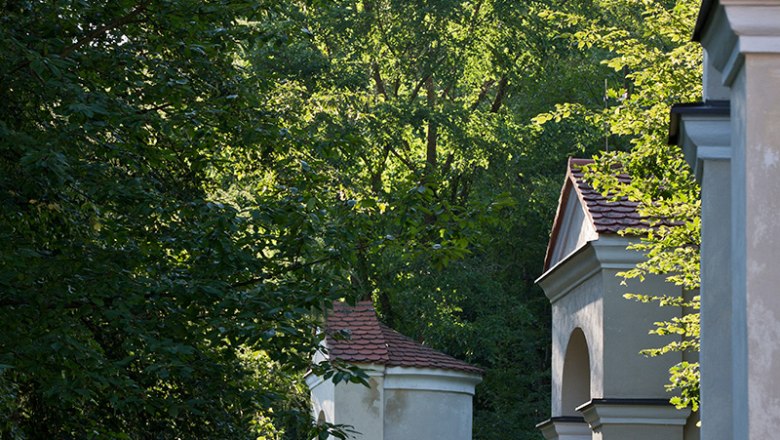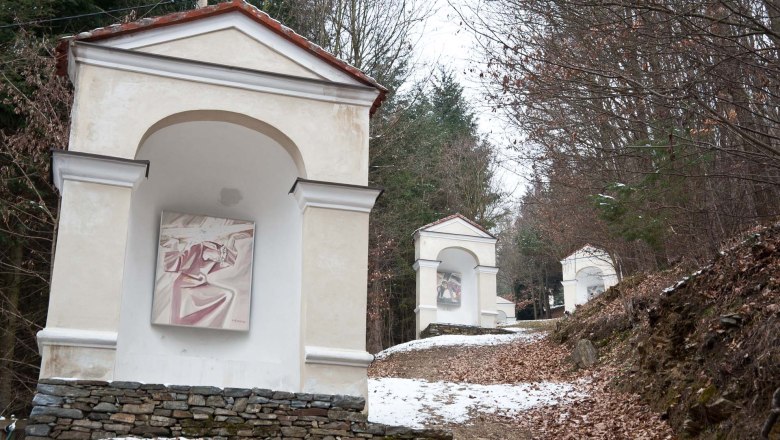Kalvarienberg Unterranna
Monastery / abbey
Description
Calvary Unterranna - Baroque gem and reminder of the Pauline Fathers
The Calvary lies somewhat secluded on a steep slope in the north-east of Unterranna. In 1414, Hans III von Neudegg, Lord of Ranna, and his wife Kunigunde founded a monastery in Unterranna and converted the church into a monastery church in honor of Mary and St. Stephen. They called 12 monks from the order of St. Paulus Eremita from Hungary to Unterranna. The church and monastery were consecrated in 1516.
The monastery collapsed during the Reformation and was plundered in 1619. In the second half of the 17th century, the monastery experienced its heyday. The Calvary (1675-1680) was also built during this time. Emperor Joseph II dissolved the monastery in 1783. The building was auctioned off with all other property in favor of the religious fund. The church remained the parish church until 1797, when the parish was united with Niederranna. In 1829/30, the monastery buildings and church were largely demolished. Next to the church ruins, the Johannes Nepomuk chapel with a statue of the saint from the mid-18th century was preserved.
From 1985-1993, the Mühldorf tourist office restored the entire complex under the guidance of experts. The Way of the Cross begins in Unterranna next to a wayside shrine of St. John Nepomuk and leads steeply up the mountain. To the right and left of this are the Stations of the Cross in the form of open semi-circular wayside shrines. After nine such chapels, you reach the crucifixion chapel. It has an elliptical floor plan and is equipped with a dome. Inside the crucifixion chapel there is an altar with a large crucifix (12th station) and two station pictures (10th and 11th stations). From the chapel, the path leads down to the Chapel of the Holy Sepulchre.



